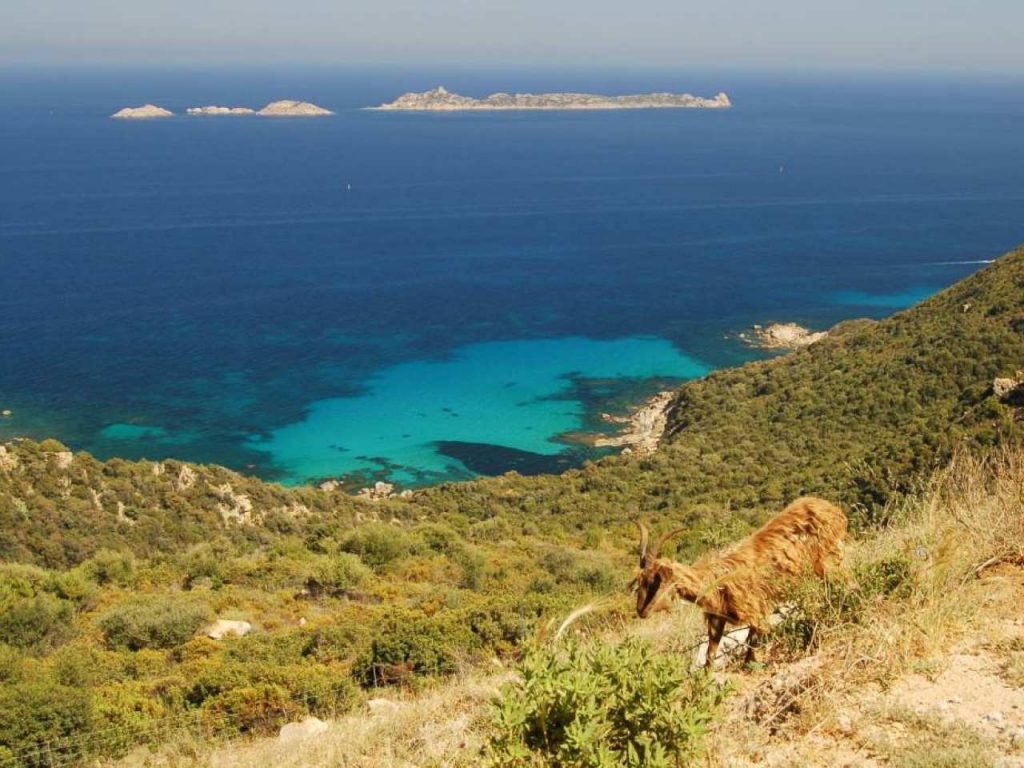Villasimius is a renowned town for its marvelous 27 kilometers of coastline, pristine beaches, and turquoise sea, adorned with granite formations of various shapes and sizes. The coastal road from Cagliari to Villasimius unfolds enchanting views, featuring granite promontories and sandy beaches. After passing the Solanas beach, the road winds up the Capo Boi promontory, running along a high cliff accessible both by sea and, with difficulty, by land. Once you reach its peak, the panorama unfolds over the gulf and Capo Carbonara, revealing the Sa Ruxi beach, the tourist port of Villasimius, and the fantastic stretch of Simius-Notteri-Cala Giunco, known as Timi Ama beach.
From the vantage point of the coastal road, you can see the hill with the Spanish tower, overlooking the Timi Ama beach and the nearby Notteri lagoon. The tower is a destination for tourists due to its exceptional view. The pristine beach extends into the waters of the Marine Protected Area of Capo Carbonara, where granite formations emerge from the transparency of the sea around the island of Cavoli.
From the Capo Boi promontory, Villasimius is approximately 12 kilometers away. Beyond the town of Villasimius, the coastal road continues toward the beautiful isthmus of white sand and the spectacular granite rocks of Punta Molentis (in Sardinian, it means Point of the Donkeys). Until a few decades ago, a granite quarry operated here, partly worked by local stonecutters who used donkeys for transportation. The Punta Molentis beach, like those in Villasimius in general, is highly frequented in the summer months, but one can simply explore the “andaleddas”, ancient hidden paths, to discover less crowded corners and beaches.
WHAT TO SEE
On the hills overlooking Cuccureddus beach, it is possible to visit the sanctuary of the goddess Ashtart, built by the Phoenicians around 750 B.C. In Roman times, the Phoenician temple was dedicated to Juno, and from there comes the fragment of a female mask dating back to the 2nd century A.D., along with other artifacts on display at the Archaeological Museum of Villasimius. The museum is housed in the historic fortress perched on the coast, where visitors can explore artifacts from ancient civilizations that once colonized the area: Nuragic, Carthaginian, and Roman.
Villasimius is a popular seaside and conference center, equipped with an elegant marina and a lively summer nightlife. There are nightclubs, live music in city bars and beach kiosks, as well as folkloric and gastronomic events.
ENOGASTRONOMY
Villasimius has an ancient pastoral vocation, and to this day, its fragrant pastures, both in the plains and in the hills, nourish the livestock from which the renowned pecorino and goat cheeses are produced by local breeders. The gastronomy revolves around exquisite seafood such as sea urchins, shrimp, lobsters, sea bass, octopus, bream, and groupers, but also relies on excellent lamb and suckling pig supplied by local farmers. Almonds and local honey are used to prepare amaretti and other typical Sardinian sweets.
HANDICRAFT
Leather processing is carried out, and custom-made carpets, home linens, and clogs are crafted.

